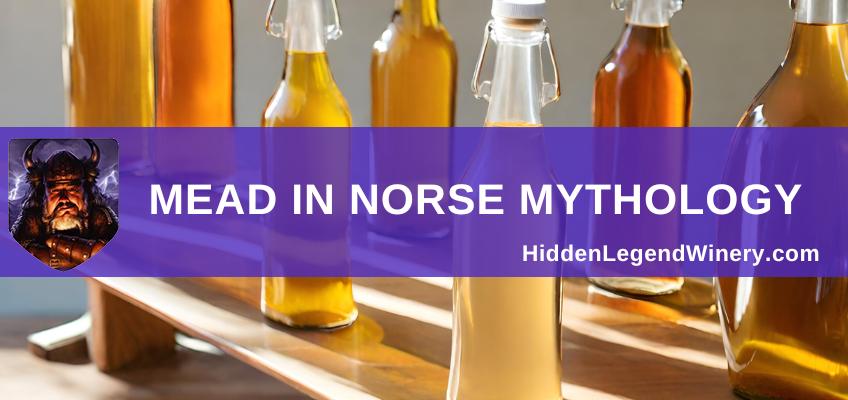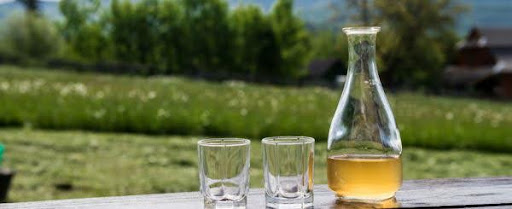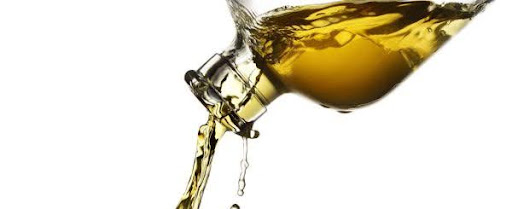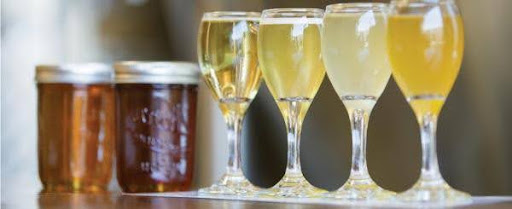
Exploring the Mystical Brew: Mead in Norse Mythology
Many people are curious about the role of mead in Norse mythology. Mead is not just a drink; it’s the beverage of the gods in these ancient tales. This blog will explore how mead influenced Viking culture, its mythical origins, and its place in rituals.
Get ready to discover!
Key Takeaways
- Mead is a magical drink in Norse mythology that symbolizes wisdom, poetry, and the divine connection between heaven and earth, with gods like Odin drinking it for knowledge.
- The story of the Mead of Poetry explains how Odin acquired this enchanted mead by tricking giants and seducing a giantess, showing its worth as a source of poetic inspiration.
- In Viking culture, mead signified wealth and celebration, playing a crucial role in feasts, gatherings, and marking significant events with its presence enhancing communal bonds.
- Norse rituals and sacrifices often featured mead as an offering to deities for blessings of eloquence and artistic ability; its use demonstrated respect for the gods.
- Today’s interest in Norse mythology has reignited enthusiasm for mead among enthusiasts and modern mead makers who draw inspiration from ancient tales to craft their beverages.
Origins and Importance of Mead in Norse Mythology
Mead in Norse Mythology is the drink of the gods and holds significant importance. It is closely associated with Odin and Valhalla, as evidenced in the story of the Mead of Poetry.
In Norse mythology, mead is the drink of the gods
In Norse mythology, gods and mortals alike hold mead in high regard. This magical beverage isn’t just any drink; it symbolizes wisdom, poetry, and the divine connection between heaven and earth.
Legends tell us that Odin himself partook of this precious mead to gain his immense knowledge.
The Mead of Poetry is a central tale within these myths. Crafted from Kvasir’s blood by dwarfs, this extraordinary liquid bestowed the gift of poetry upon those who drank it. Odin went through great lengths to acquire this magic mead for the gods, ensuring its place as a cherished treasure in Norse mythos.
Associated with Odin and Valhalla
Transitioning from the general reverence for mead as a divine beverage, its significance deepens with its association to Odin and Valhalla. Odin, the Allfather of the gods, is closely linked with this enchanting drink.
Legends tell us that he once embarked on a quest for Suttung’s mead, a magical potion that granted anyone who drank it immense wisdom and the ability to recite poetry flawlessly. This tale begins with Odin cleverly tricking giants and showcasing his determination to obtain this precious liquid for the gods and mankind.
Valhalla, where brave Norse warriors hoped to find themselves after death, also ties into the lore of mead. It is said that in Valhalla, fallen heroes are welcomed by Odin himself and are treated to an endless supply of mead.
This brew flows from the udders of Heidrun, a mystical goat residing atop Valhalla’s roof, symbolizing eternal reward and celebration in honor of valorous deeds performed in life.
The connection underscores not just mead’s importance but also its role as a marker of achievement and prestige within ancient Norse culture.
The story of the Mead of Poetry
The tale begins with the war between two groups of gods, the Aesir and Vanir. After their conflict ends, they decide to make peace by creating a mixture from their saliva, which spawns Kvasir, the wisest being alive.
Unfortunately, Kvasir’s wisdom leads to his demise at the hands of dwarfs who then mix his blood with honey to create the Poetic Mead, a brew that endows anyone who drinks it with poetic talent and wisdom.
Odin discovers this magical mead and decides he must have it for himself. Using his wit and skills in disguise, he tricks his way into the stronghold where the mead is kept. He seduces Gunnlod, the giantess guarding it, and over three nights drinks all of it.
Transforming into an eagle, Odin flies back to Asgard to share this gift with other gods but not without some spills along his journey – drops that mortals find can also give them inspiration for poetry.
As we explore further into Norse mythology’s vivid landscapes; next up is how these intriguing elements shaped Viking life itself.
Discover Ancient Brews: Our Collection of Traditionally Crafted Mead
Seeking a taste of the ancient? If you’re intrigued by mead prepared using time-honored methods, steeped in the traditions of Norse mythology, then our shop awaits your visit.
Discover our varied selection of meads, each crafted with the same care and passion as the ancients. Come, explore the rich flavors of history with us!
Our selection showcases a variety of unique flavors, including:
Huckleberry Mead: A wild, berry-infused delight capturing the essence of untamed forests.
Plum Mead: A smooth, rich concoction that balances sweetness with a touch of tartness.
Orange Ginger Mead: A zesty and warming blend, perfect for those who seek a little spice.
Maple Mead: A sweet homage to the golden syrup, offering earthy undertones and comforting warmth.
Fruit Pack Variety Pack: A curated collection for the adventurous, featuring a spectrum of fruity blends.
Embark on a taste adventure with us and discover the ancient world through its most cherished brews.
The Significance of Mead in Viking Culture
Mead held great significance in Viking culture, symbolizing wealth and celebration while also being a social drink. The art of mead-making was a cherished tradition in Viking times, adding to the cultural importance of this revered beverage.
Mead as a symbol of wealth and celebration
Mead symbolized wealth and celebration in Viking culture, often associated with prosperity and important events. It was a drink that signified status and abundance, showcasing the host’s hospitality during feasts and gatherings.
The crafting of mead required time and effort, making it an offering reserved for special occasions. Its presence at celebrations emphasized the significance of the event, establishing a link between abundance and communal merriment.
The consumption of mead at gatherings not only highlighted affluence but also brought people together in joyous revelry. As friends and family partook in this honey-based elixir, they fostered bonds while celebrating life’s milestones.
The status of mead as a symbol of wealth meant its presence was integral to commemorative festivities, emphasizing the importance placed on shared experiences within the community.
Mead as a social drink
Mead was a central part of Viking social gatherings. It was commonly served during feasts, celebrations, and important events. The act of sharing mead created a bond between individuals and fostered a sense of community.
Mead played a significant role in bringing people together, promoting camaraderie and strengthening relationships. Its presence at social gatherings reflected the Vikings’ appreciation for conviviality and kinship.
Moving on to “Mead and its Role in Norse Mythology and Religion”..
How mead was made in Viking times
During Viking times, mead was made through a process that involved fermenting honey with water and sometimes fruits or spices. Here are the key steps involved:
- Gathering honey from beehives or wild honey sources.
- Diluting the honey with water to create a sweet liquid base.
- Adding yeast to kickstart fermentation, a crucial step in turning the mixture into mead.
- Allowing the mixture to ferment for several weeks or months, depending on the desired strength and sweetness of the mead.
- Occasionally flavoring the mead with fruits like berries or apples, and spices such as cloves or cinnamon for added complexity and depth of flavor.
- Straining out any solid particles before bottling the finished mead for consumption.
The process of making mead required patience and skill, but it resulted in a beloved drink that held significant cultural and religious importance to the Vikings.
Mead and its Role in Norse Mythology and Religion
In Norse mythology and religion, mead symbolizes wisdom and poetry, playing a crucial role in rituals and sacrifices. To find out more, read on to explore its significance.
Mead as a representation of wisdom and poetry
Mead symbolizes wisdom and poetry in Norse mythology. It is linked to the story of the Mead of Poetry, a mystical beverage that grants knowledge and inspiration to those who consume it.
In Viking culture, mead was revered as a drink associated with creativity and intellectual prowess. The significance of mead in representing wisdom and poetic inspiration is evident in its connection to Odin, the chief deity in Norse mythology, who threw himself into the depths of Mimir’s well to gain immense knowledge and insight.
In rituals and sacrifices, mead played a central role as an offering to deities for blessings of eloquence and artistic ability. This representation underscores how deeply intertwined mead was with the spiritual beliefs and values of ancient Norse societies.
Mead in rituals and sacrifices
In rituals and sacrifices, the Norse people offered mead to their gods as a symbol of reverence and gratitude. The act of sharing mead was seen as an offering of hospitality and goodwill towards the deities, strengthening the bond between humans and gods.
Mead played a crucial role in religious ceremonies, where it was poured into ceremonial vessels or used in libations as part of sacred rituals. The significance of mead in these practices reflects its deep-rooted association with spirituality and divine connection.
During sacrificial rites, mead was poured onto sacred flames or sprinkled on altars as an offering to honor the gods. This ritualistic use of mead demonstrated respect for the divine powers and sought favor from the spiritual realm through this cherished drink.
Modern Day Revival of Mead and its Connection to Norse Mythology
Mead’s connection to Norse mythology has led to a modern-day revival, inspiring mead makers and gaining popularity in Viking reenactments and festivals. Interested in learning more about this fascinating link?.
Mead’s popularity in Viking reenactments and festivals
Mead’s popularity in Viking reenactments and festivals has surged in recent years. Enthusiasts and history buffs alike are drawn to the drink as it evokes a sense of authenticity and tradition from the Viking era.
At these events, mead serves not only as a nod to historical accuracy but also adds an immersive element to the overall experience. The unique taste and cultural significance make it a favorite among those seeking to truly immerse themselves in Norse mythology.
Viking festivals and reenactments bring together like-minded individuals who share a passion for ancient traditions, including the consumption of mead. Its presence at such events reflects its integral role in Norse culture, drawing people closer to the rich tapestry of myths and legends that continue to captivate audiences today.
How Norse mythology inspires mead makers today
Mead’s popularity in Viking reenactments and festivals has sparked a resurgence of interest in Norse mythology among modern mead makers. The tales of Odin, the Norse god associated with mead, and the legendary Mead of Poetry have inspired mead enthusiasts to create unique brews that pay homage to these ancient stories.
Drawing from their own knowledge of Norse myths and legends, mead makers meticulously craft flavors and branding that capture the essence of this rich cultural heritage. By embracing the spirit of adventure and creativity from Norse mythology, they are able to infuse their meads with a sense of mystery and tradition that captivates consumers seeking more than just a beverage.
Conclusion
The modern-day revival of mead has seen a strong connection to Norse mythology, with its popularity in Viking reenactments and festivals. Mead makers today are inspired by the rich history and myths surrounding mead, infusing their craft with ancient traditions.
As the drink that fueled the gods and held a central place in Viking culture, mead continues to captivate enthusiasts who seek to experience a taste of this legendary beverage.
Mead’s resurgence pays homage to its significance in Norse mythology and Viking culture, bridging the gap between ancient lore and contemporary appreciation for this historic libation.
FAQs
1. What is mead in Norse mythology?
In Norse mythology, mead is a special drink that was believed to grant wisdom and poetic inspiration to anyone who drank it.
2. Who gave the mead its power in Norse mythology?
Odin, one of the main gods in Norse mythology, gave the mead its magical powers by mixing it with his own wisdom and sharing it with others.
3. How did Odin get all the mead?
Odin obtained all the mead through an adventurous quest involving trickery and transforming himself into different forms to outsmart nine slaves guarding it.
4. Is there any historical artifact related to the story of mead in Norse mythology?
Yes, the Stora Hammars III runestone features images that some believe tell parts of the story about Odin and his quest for the magical mead.

How to Bottle Mead for Aging and Storage
Help Save The Bees By Drinking Mead



